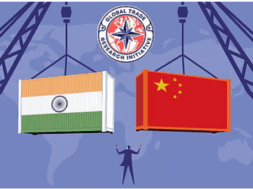
COVID-19: After 24 deaths, and 209 critical cases in October 2024, WHO asks China for details
Virendra Pandit
New Delhi: As China recorded 24 deaths and 209 severe cases of ‘pneumonia’ last month, the WHO, fearing a new spike in COVID-19 infections this winter, has asked Beijing to come clean and provide details.
China’s respiratory disease experts have warned of an uptick in COVID-19 infections in the winter, urging the elderly and vulnerable populations to get vaccinated as soon as possible, according to the state-run Global Times newspaper. The spike in the number of cases has been triggered by the strains of XBB variants.
In October, China witnessed a resurgence of infections with a total of 209 new severe cases and 24 deaths reported across the country, according to the Chinese Centre for Disease Control and Prevention.
Following widespread protests against its brutal Zero COVID strategy clamped in 2020, China abruptly dropped the policy, leading to the re-emergence of massive waves of infections. In the absence of authentic official data, some reports, relying on the ‘circumstantial evidence’ claimed that over 20 lakh people may have died of the pandemic in China after the end of the Zero COVID policy.
The fast-spreading variants like Omicron and XBB are said to have infected a vast pool of susceptible people. Besides, the efficacy of the two Chinese vaccines in use, Sinovac and Sinopharm, has also been questionable. Like most of China’s data, there is little clarity on the number of booster shots administered.
Experts said XBB is a recombinant of two Omicron sub-variants, BA.2.10.1 and BA.2.75, and is more immune evasive. It can circumvent immunity from vaccination-induced infection and has a growth advantage over other currently circulating variants of Omicron. This can cause reinfection or breakthrough infections in people.
Alarmed, the WHO has urged China to furnish “detailed information” on increased respiratory illnesses and reported clusters of pneumonia in children.
This fresh development has an uncanny similarity to what happened in November-December 2019, ahead of what later unfolded as COVID-19, the first pandemic in the 21st century. So far, it has infected nearly 700 million and killed seven million people worldwide.
This time around, officials from China’s National Health Commission reported this increase in respiratory diseases at a press interaction earlier this month. They attributed this increase to the lifting of COVID-19 restrictions and the circulation of known pathogens such as influenza, mycoplasma pneumonia (a common bacterial infection that typically affects younger children), respiratory syncytial virus (RSV), and SARS-CoV-2 (the virus that causes COVID-19).
The WHO said, “On 21 November, media and ProMED reported clusters of undiagnosed pneumonia in children in northern China. It is unclear if these are associated with the overall increase in respiratory infections previously reported by Chinese authorities or separate events.”
The UN health watchdog, on Wednesday, requested China for additional epidemiologic and clinical information, as well as laboratory results from these reported clusters among children, through the International Health Regulations mechanism.
“We have also requested further information about recent trends in the circulation of known pathogens including influenza, SARS-CoV-2, RSV, and mycoplasma pneumonia, and the current burden on health care systems,” the WHO said, adding that it was also in touch with clinicians and scientists through existing technical partnerships and networks in China.
Since mid-October, northern China has reported an increase in influenza-like illness compared to the same period in the previous three years, the WHO said.
“China has systems in place to capture information on trends in influenza, influenza-like illnesses, RSV, and SARS-CoV-2, and reports to platforms such as the Global Influenza Surveillance and Response System,” it added.














